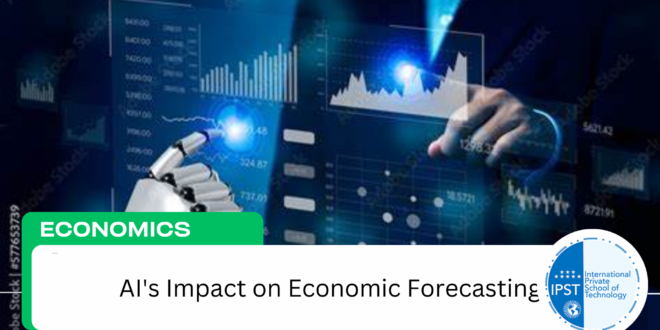The Role of Artificial Intelligence in Economic Forecasting
In recent years, Artificial Intelligence (AI) has made significant strides in transforming industries worldwide. One of the most impactful areas where AI is revolutionizing practices is economic forecasting. Traditionally, economic forecasting relied on complex mathematical models and the expertise of economists. Today, AI is enhancing these methods, offering new possibilities for more accurate predictions and more efficient data analysis.
What is Economic Forecasting?
Economic forecasting is the process of predicting future economic conditions, such as inflation rates, GDP growth, unemployment, and other critical indicators. These forecasts guide businesses, governments, and policymakers in making informed decisions. The accuracy of these forecasts is crucial for ensuring economic stability and development.
How AI Is Shaping Economic Forecasting
AI is bringing significant improvements to economic forecasting in several ways:
- Data Processing and Analysis: Traditional forecasting methods rely heavily on structured data. AI, however, can analyze vast amounts of both structured and unstructured data in real time. By processing data from sources like social media, news outlets, and financial markets, AI can identify emerging economic trends and patterns that might be missed by traditional methods.
- Machine Learning Models: Machine learning (ML) algorithms, a subset of AI, are widely used to improve predictive models. These models learn from historical data and adjust their predictions based on new data, improving their accuracy over time. For instance, ML models can predict fluctuations in stock prices, changes in commodity prices, or shifts in consumer behavior, which are crucial to economic forecasting.
- Forecasting Accuracy: One of the biggest challenges in economic forecasting is the inherent uncertainty in economic systems. AI helps reduce this uncertainty by identifying non-obvious patterns and creating more dynamic models that can adapt to new economic conditions. This allows economists to generate more reliable forecasts, even in times of economic volatility.
- Automation and Efficiency: AI automates many aspects of the forecasting process, from data collection to model generation and testing. This leads to faster results and frees up valuable time for economists to focus on higher-level analysis and strategic decision-making.
The Future of AI in Economic Forecasting
Looking ahead, AI’s role in economic forecasting will only continue to grow. With advancements in deep learning, natural language processing, and other AI technologies, the predictive capabilities of economic models will become even more sophisticated. Moreover, as AI systems become more integrated with global financial systems, real-time economic forecasting could become a norm, providing decision-makers with up-to-the-minute insights.
Challenges and Considerations
While AI is transforming economic forecasting, it is not without challenges. Ensuring the transparency and interpretability of AI models is a critical concern. Economists and policymakers need to understand how AI-generated predictions are made to ensure they are reliable and trustworthy. Additionally, the reliance on large datasets and the potential for biases in AI models must be carefully managed to avoid skewed results.
Conclusion
Artificial Intelligence is reshaping the landscape of economic forecasting. By enhancing data processing, improving predictive models, and offering more accurate forecasts, AI is providing new opportunities for better decision-making in economics. As AI technology continues to evolve, its role in economic forecasting will only expand, offering even more sophisticated tools to navigate the complexities of the global economy.
This structure incorporates the key elements you asked for and is optimized for search engines with the focus keyphrase, SEO title, slug, and meta description. Let me know if you’d like to make any adjustments!
 International Private School of Technology المدرسة الدولية الخاصة للتكنولوجيا Private School مدرسة خاصة للتكوين المهني
International Private School of Technology المدرسة الدولية الخاصة للتكنولوجيا Private School مدرسة خاصة للتكوين المهني


